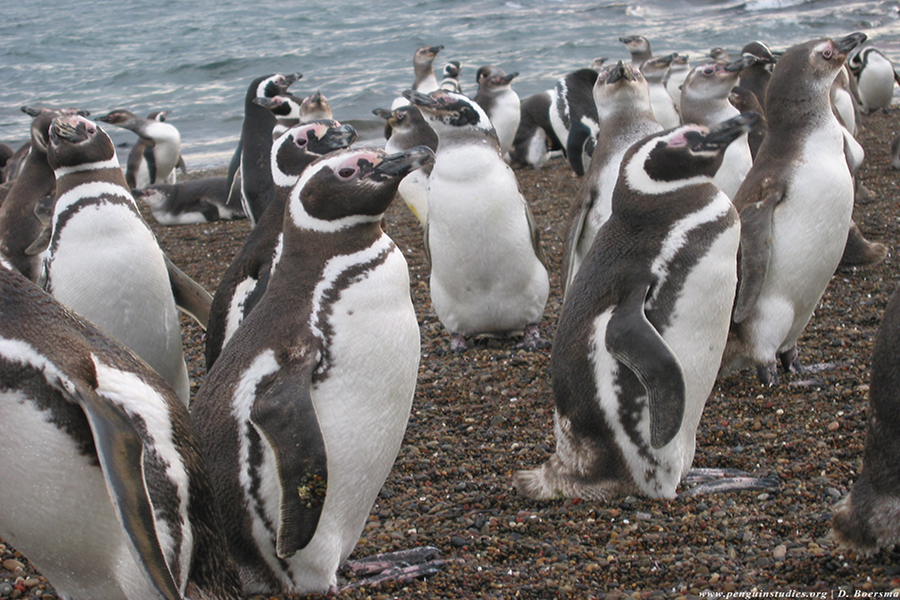Why does a penguin visit a Brazilian fisherman every year?
Loading...
A most unusual and endearing relationship has blossomed in a small island village on the coast of southwest Brazil. A Magellanic penguin, found only in Latin America, and 71-year-old retired bricklayer and part-time fisherman Joao Pereira de Souza, have developed an enduring bond.
The lives of the penguin and Mr. de Souza first became entwined after the fisherman found the small bird in 2011 on the beach near his home, covered in oil and near death. The fisherman cleaned it off and nursed it back to health, feeding the penguin a steady diet of fish to give it back its strength. He named it Dindim.
When the bird recovered de Souza tried to release it back into the sea, but Dindim wouldn’t go.
“He stayed with me for 11 months and then, just after he changed his coat with new feathers, he disappeared," de Souza told Globo TV in Brazil, as The Independent reported.
But not for long. The penguin, which breeds with hundreds of thousands of others on the southern coasts of Argentina and Chile, three to five thousand miles away, swims back every year to the Brazilian village to spend eight months with de Souza at his house.
“Everyone said he wouldn’t return but he has been coming back to visit me for the past four years. He arrives in June and leaves to go home in February, and every year he becomes more affectionate as he appears even happier to see me,” de Souza said.
Images and videos circulating online show the two companions tenderly interacting, with de Souza bending down to nuzzle the waddling bird.
“I love the penguin like it’s my own child and I believe the penguin loves me,” de Souza told Globo TV.
“No one else is allowed to touch him. He pecks them if they do. He lays on my lap, lets me give him showers, allows me to feed him sardines and to pick him up,” he said.
It seems that Dindim has grown so attached to his human companion that he is skipping breeding season, which lasts from October through February, when tens of thousands of the birds meet up with their partners to breed and nest.
“This penguin has clearly bonded with this guy,” P. Dee Boersma, a conservationist biologist at University of Washington who has studied penguins for 40 years, told The Christian Science Monitor in an interview.
“He’s treating [de Souza] like his mate,” she said.
After the breeding season ends and their chicks have fledged, Magellanic Penguins, named after the Portuguese explorer Ferdinand Magellan, molt, or replace their feathers. This happens in March and April. They eat half their body weight to bulk up before this process begins, and then stay onshore to fast during the weeks of feather growing, as their feathers are not insulating or water-tight during the molt.
After the molt – from June to August – the penguins set out to sea in search of food, such as fish, squid, and krill. They travel north, following fish away from winter temperatures at the southern tip of Latin America up to northern Argentina, explains Dr. Boersma, and sometimes as far north as Peru.
It is during this season that Dindim travels to see de Souza, a reliable food source and loving companion.
Though it isn’t exactly common for penguins to develop these kinds of bonds with humans, it’s not unheard of, says Boersma.
“Penguins live a long time (up to 30 years); they get to know their neighbors and other penguins,” she says.
She has had a similar experience studying penguins in Punta Tombo, Argentina, home of the largest colony of Magellanic penguins, with more than 200,000 breeding pairs.
There, a penguin she named Turbo, whose nest is near her office, befriended Boersma a decade ago and has been her persistently inquisitive neighbor ever since. Boersma does not feed Turbo; he's just curious, she says.
“One night I heard what I would call knocking on the door,” Boersma recalled of one of her first interactions with Turbo. She cracked the door to find that Turbo had been pecking against it.
“So I opened the door and he came in,” she said.





